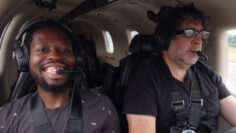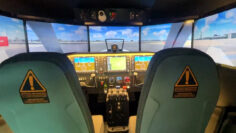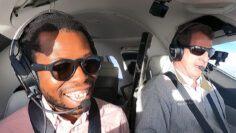How Fast Do Planes Fly?

Delving into the exhilarating world of aviation, one cannot ignore the paramount role of speed. The essence of velocity propels aircraft through the atmosphere, influencing not just the time taken to traverse distances but also the dynamics of flight, fuel economy, and more. Whether it’s a majestic commercial airliner sketching a shimmering path across the sky or a stealth fighter jet deftly executing maneuvers, speed remains a crucial factor. This exploration aims to delve into the different classes of aircraft, explore factors affecting their speed, and satisfy curiosity surrounding the topic of aviation speed.
Deciphering Factors that Influence Aircraft Speed
Numerous elements coalesce to determine the speed of an aircraft.

The Role of Aerodynamics and Design
The aircraft’s structure, including its body and wings, greatly impacts its speed. Streamlined profiles, innovative wing designs, and drag reduction significantly augment speed. Engineers harness the laws of aerodynamics to shape an aircraft, reducing resistance and ensuring optimal airflow. The result is a machine that slices through the air, achieving impressive speeds.
Engine Power: The Propelling Force
The power and efficiency of the engines determine the thrust propelling the aircraft forward. Powerful engines equate to greater speed. Jet engines, especially, are renowned for their high power output, enabling faster speeds compared to their piston counterparts.
Altitude and Air Density: The Higher, the Faster
As an aircraft climbs, it encounters lower air density, which reduces drag and allows for higher speeds. Thus, altitude plays a crucial role in determining an aircraft’s velocity.
Weather Conditions: A Helping or Hindering Hand
The prevailing weather conditions, particularly wind speed and direction, can boost or hamper an aircraft’s speed. Tailwinds, blowing in the direction of the flight, can enhance speed, while headwinds, blowing against it, can reduce speed, consequently increasing travel time.
Speed Dynamics in Different Classes of Aircraft
Commercial Passenger Jets
Commercial passenger jets, engineering marvels of our time, are designed to ferry a large number of people over vast distances. Their cruising speeds typically fall within the range of 500 to 600 knots (575 to 690 mph or 926 to 1,111 km/h), with factors such as aircraft model, altitude, and weather conditions affecting the precise speed.
Cruising speeds of commercial jets are fine-tuned for efficient long-distance transport. Prominent examples such as the Boeing 747 and the Airbus A380 cruise at around 570 knots (655 mph or 1,054 km/h). More recent entrants like the Boeing 787 Dreamliner and smaller jets like the Airbus A320 maintain cruising speeds of approximately 530 knots (610 mph or 982 km/h) and 460 knots (530 mph or 852 km/h), respectively.
Military Aircraft
Built for specific tactical purposes such as combat, reconnaissance, and interception, military aircraft need to be fast. Their speeds often surpass those of commercial jets. Performance-oriented jets like the F-22 Raptor and the Eurofighter Typhoon can achieve speeds exceeding Mach 2 (about 1,500 mph or 2,414 km/h). The SR-71 Blackbird holds the speed record for a manned aircraft, achieving up to Mach 3.2 (roughly 2,200 mph or 3,540 km/h), while the Soviet MiG-25 Foxbat was known for its high-speed capabilities, reaching up to Mach 2.83 (about 1,900 mph or 3,050 km/h).
General Aviation
General aviation refers to a variety of aircraft serving multiple purposes, including personal transportation, flight training, and leisure activities. The speed of these aircraft varies significantly
based on their design and purpose. Smaller piston-engined planes, often utilized for personal or recreational use, typically cruise between 100 and 200 knots (115 to 230 mph or 185 to 370 km/h). Prioritizing fuel efficiency and range over sheer speed, these aircraft offer a laid-back flying experience.
The speed of general aviation aircraft is influenced by several factors. Engine power and aircraft weight have a significant impact on maximum speed. Additionally, the aerodynamic design of the aircraft, including elements like wing shape and drag reduction, also contribute to its speed capabilities. Weather conditions and altitude further influence the speed potential of these aircraft.

Common Queries about Aircraft Speed
What’s the fastest speed an aircraft has ever achieved?
The record for the fastest speed by an aircraft is held by NASA’s X-43, an experimental unmanned aircraft. In 2004, it achieved a staggering Mach 9.6, equivalent to over 7,346 mph (11,780 km/h), powered by a cutting-edge scramjet engine designed for extreme-speed flight.
Does the size of an aircraft impact its speed?
The size of an aircraft can impact its speed. Larger aircraft often possess more powerful engines to handle their increased weight, allowing them to maintain high speeds. However, larger aircraft also face more air resistance or drag, which can limit their maximum speed. Design and aerodynamic efficiency are critical in ensuring that an aircraft, regardless of its size, can achieve and maintain its optimal speed.
Are there any supersonic commercial aircraft?
Currently, there are no operational supersonic commercial aircraft. The Concorde, operational between 1976 and 2003, remains the most famous supersonic commercial jet to date. However, ongoing efforts are being made to design new supersonic and even hypersonic commercial aircraft that may revolutionize air travel in the future.
Summary
In aviation, speed matters. It dictates the character of different aircraft, whether commercial passenger jets, military aircraft, or general aviation aircraft. Each type adheres to a unique speed spectrum shaped by factors such as design, engine power, altitude, and weather conditions. As we witness continuous advances in aviation technology, the concept of speed remains a driving force, underscoring the importance of efficiency and performance. The prospect of supersonic commercial flight, once realized, might well redefine the future of aviation. Indeed, speed is not merely a facet of aviation; it is its pulse, dictating travel time, efficiency, and capability. Understanding speed is, therefore, essential for comprehending the multifaceted world of aviation.
Engage in the Discussion
We hope this exploration into the realm of aircraft speed has provided intriguing insights. Remember, your thoughts and experiences add tremendous value to the discussion. By doing so, you help grow our community of aviation enthusiasts and learners. For more enlightening discussions around aviation, be sure to check out our recent article, “Not Too Old To Become a Commercial Airline Pilot.” It might just inspire you to embark on a thrilling new journey!






